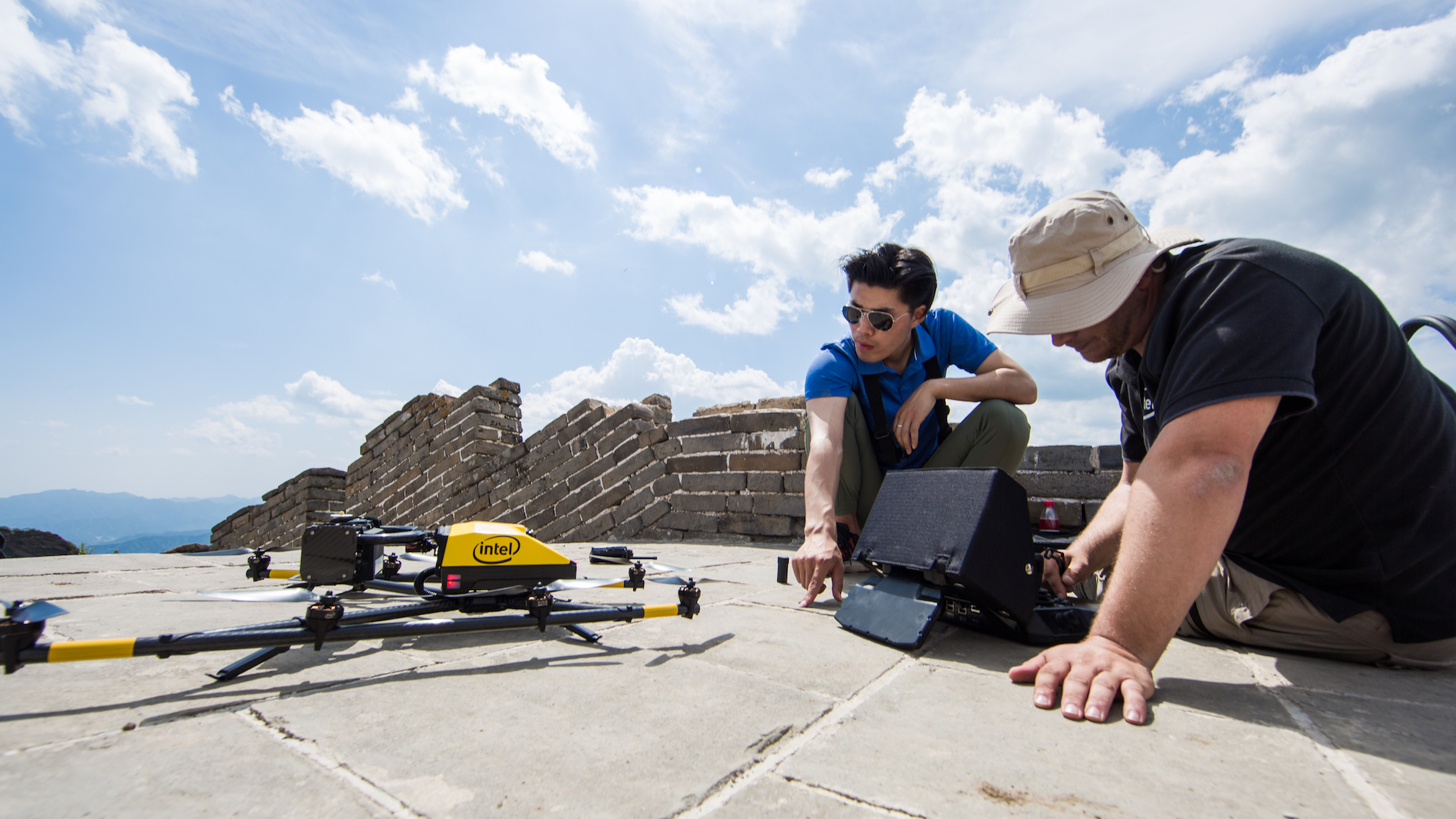

Intel is lending its advanced drone technologies to help preserve the Jiankou section of the Great Wall of China, in partnership with the China Foundation for Cultural Heritage Conservation (CFCHC) and researchers from the Laboratory of Information Engineering in Surveying, Mapping and Remote Sensing at Wuhan University, according to Intel’s press release.
Practically, this means Intel supplies the Falcon 8+ drone and artificial intelligence software, while Wuhan researchers use the technology to create invaluable 3D models of the Jiankou section of the Great Wall. With Intel providing the high-resolution aerial imaging otherwise too difficult or dangerous to reach for human beings, and Wuhan’s experts creating digital replicas of the captured environment, the integrity of the Great Wall itself can be analyzed in order to practically assess which areas require attention or partial reconstruction.
This aerial approach has proven far more convenient and functional than the traditional method, which usually takes about one month and requires manual inspection, measuring tape, and other frustrating analog measures. With Intel supplying drone tech to the CFCHC and Wuhan’s experts, the entire process can be completed in a mere three-day period, supplying highly accurate data that can be used to create an efficient repair schedule.

Let’s take a look at Intel’s new “Preserving A Legacy” campaign, in which teams from all corners of the Earth come together to keep the Jiankou section from falling apart even further.

The Great Wall’s Jiankou section is over 450 years old, and has unfortunately undergone natural erosion in addition to the destructive human footprint ever since. According to the press release, this 12-mile long chunk is one of the most difficult and dangerous sections to access by foot. The steep and treacherous nature has hence led to a fair amount of negligence regarding reconstruction and maintenance, which Intel, Wuhan, and the CFCHC are now ingeniously prioritizing using innovative drone technology.